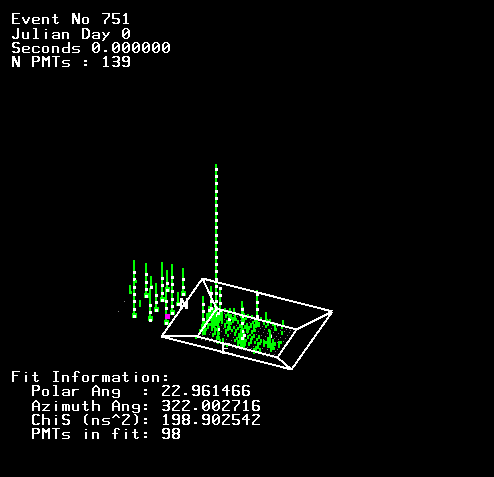

Array to Study Shower Timing Effects
Several characteristics of our Milagrito (and Milagro) detector and of the shower front shape and thickness will have a significant effect on our ability to accurately reconstruct shower angles. Several people are diligently working to understand and compensate for these effects. Most of the detector effects such as electronic slewing and timing pedestals are well on their way to being understood and corrected in our data. The shower effect studies which should look at sampling and curvature have begun but are still in their infancy.
The shower effects, if not compensated for, can significantly worsen our shower angular resolution as seen in Figure 1. The shower effects can be studied by determining the deviations of the angle fit residuals (TChis, their peaks or medians) as a function of pulse height and shower core distance of each pmt hit. This study should be done after the data has been corrected for detector effects.
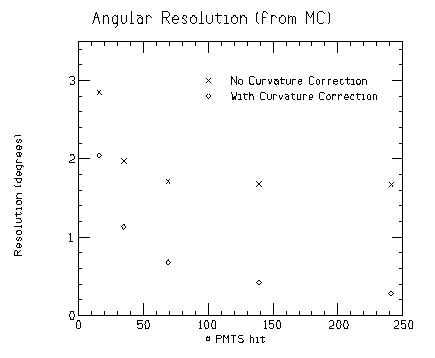
Figure 1: MC Resolution vs # PMTs Hit ("Curvature correction" here means both pulse height & core distance effects)
The sampling shower effect is defined to be the systematic deviation of the TChis with respect to pulse height. Shower fronts have a non-zero width (perhaps as large as 20 ns or more). It is possible to have the first light hiting a pmt come from a particle anywhere within the shower front width. However, if the local particle density is relatively high, then it is most probable that the first hit will come from the front of the shower. If the local particle density is low, then it is most probable that the first hit will come from the middle of the shower width. Since the shower particle density decreases with increasing core distance, there is a core distance dependence to sampling as well.
Curvature is the deviation of the TChis with respect to core distance. This is typically seen as the TChis systematically shifting to later times as the core distance for the hit increases. This is due to the positive curvature of the shower front.
To study the core distance dependence of these shower effects, we need to have a reasonably good estimate of the shower's core position for at least a subset of showers. We could use showers whose cores land on the pond and thus (we hope) have their core positions well determined, but this would limit us to a maximal core distance of only 50 m. Showers whose cores are off the pond may contaminate the subset. I have proposed that we deploy a small array of 16 counters near the Milagro pond to "nail down" the core position of a sample of showers whose cores are off the pond. This sample of "off-pond" showers could be augmented by a good sample of "on-pond" showers so that all reasonably ranges of core distances could be studied.
Array as Further Tests of Stability, Sensitivity and Design of Water Tanks
In previous work (transparency copies from 5/96 meeting) I showed that water tanks are more sensitive to secondary particles from air showers (mainly photons) than are shmoos. I also showed that with a sparse array of tanks one could obtain a good core resolution as shown in Figure 2 and Figure 3. This results were obtained using a modification of our standard Gaussian core fitter which used both pond and tank hits. So using water tanks in a sparse array should work if we can procure and assemble them at a reasonable cost of money and manpower. We also need to make sure that they will maintain good water quality with little user maintenance.
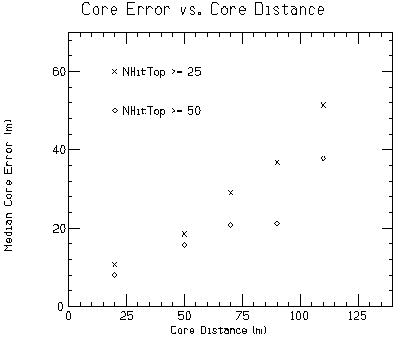
Figure 2: Core Resolution (Full Milagro) vs Core Distance
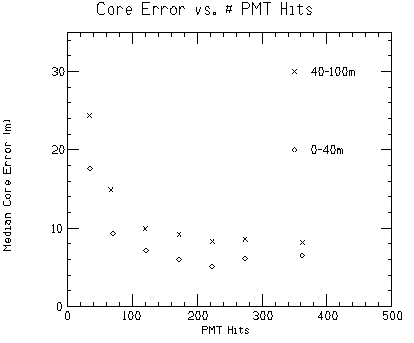
Figure 3: Core Resolution (Full Milagro) vs # PMTs Hit
We have had one prototype tank at the site since December 1996. Indications are that it survived the winter and is still functioning. Adding more tanks to make a small array will increase our experience working with them and will help us improve on their design. It will also allow us to better understand their sensitivity to shower secondary particles such as fluctuations of side-by-side counters (as was done in Cygnus). We can also select showers whose cores fall on the pond and whose core positions are (hopefully) well determined. Using these we can study the response of the water tanks as a function of core distance to the tanks.
How well will a small array do and How should we deploy them?
The main requirements which govern the way we should layout the tanks are that we want to determine the core position of a subset of off-pond showers and we want to study the response of the tanks at various core distances. For good determination of core positions they should be close together and perhaps in a regular grid. This would simplify computing the core position. To study the tank response they should be farther apart and perhaps not in a regular grid. My first trial layout is a regular 4x4 grid with a 10m spacing placed 5 m from either the north or south end of the pond. This would allow us to study core distances up to about 100m from a pmt. The tanks are 96" in diameter and 45" high in the center of the domed top. They are to be lined with two layers of Tyvec.
I have simulated this using MilagroSim (in Milagrito mode) by throwing gamma and proton induced showers starting at 500 GeV with zenith angles of 0-45 degrees and cores out to +/- 100m from the pond center. There were 100,000 proton and 50,000 gamma throws with about 905 proton events and 955 gamma events with >= 100 pmt hits. I used this data set to study the event observable properties to determine a set of cuts which allow the core position to be determined with a resolution of ~ 10-15m just using the pulse height weighted average X & Y. I did this for gamma showers and proton showers separately. The cuts I found are:
For Gammas:
For Protons:
Cuts 2 & 3 above are requirements that the tanks have sufficent statistics and strong signals and cut 1 is to reject on-pond showers. Out of the 43 proton (37 gamma) events with cores within 25 m of the tank array center, 16 (32) passed the above cuts. The efficiency of these cuts corresponds to about 10 Hz if the full rate is 250 Hz.
The resulting core error distributions are shown in Figure 4 and Figure 5.This array layout, cut set, and core position algorithm are certainly not optimized, but do show that we can achieve our goal of localizing core positions using a small array of tanks. Assuming we can get good core positions for on-pond showers, we can also study the tank response as a function of core position.
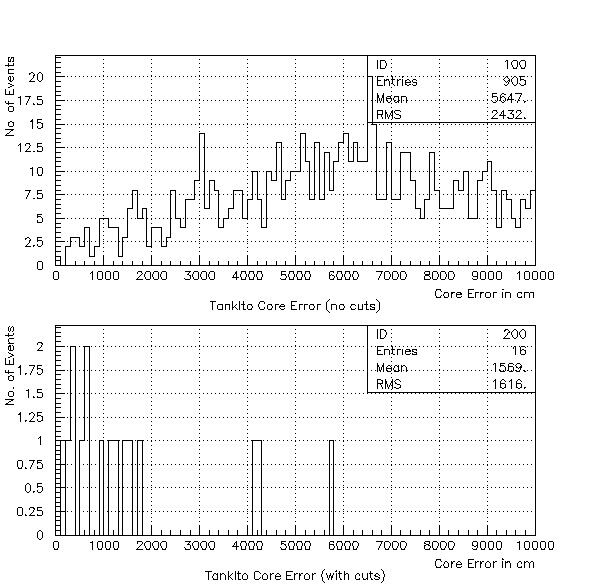
Figure 4: TankIto Core Error with/without cuts (Protons).
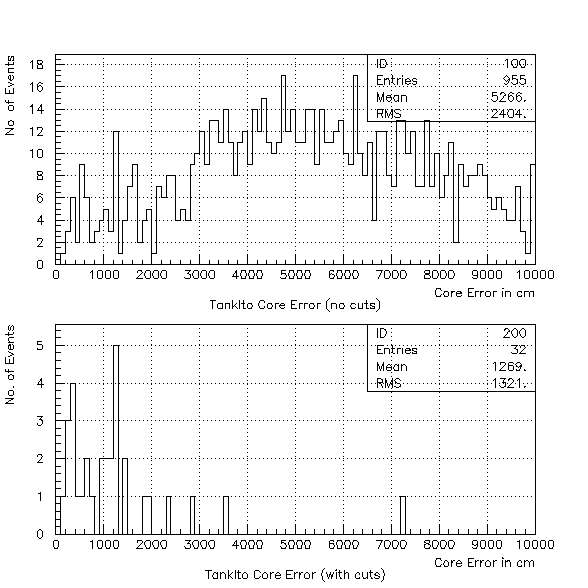
Figure 5: TankIto Core Error with/without cuts (Photons).
Work needed to deploy TankIto
We have purchased 13 tanks similar to the 1 we already have. These should arrive at the site sometime in September. This will give us 14 instead of 16. They are being made with HDPE (high density polyethelene), non-crosslinked and have a "PMT port" in the top's center. They also have a water inlet and outlet which can be used for filtering if necessary. To deploy and use these tanks, we will need to:
If you have comments about this mini-report, send e-mail to shoup@daneel.ps.uci.edu.